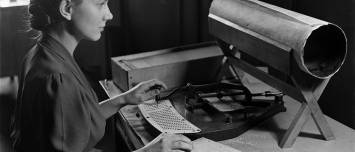About
Oracle Materialized view in a partition context.
Having a fact table that is partitioned offers two additional benefits for materialized views. The fact that only some partitions have changed, due to a DML or a partition maintenance operation, is useful for:
- Database Oracle - Query Rewrite: As long as no stale area of the materialized view is touched, it can be used for rewrite.
- Refresh: The partition information is used to improve refresh of a materialized view
Partitioning and Query Rewrite
When a certain partition of the detail table is updated, only specific sections of the materialized view are marked stale. The materialized view must have information that can identify the partition of the table corresponding to a particular row or group of the materialized view. The simplest scenario is when the partitioning key of the table is available in the SELECT list of the materialized view, because this is the easiest way to map a row to a stale partition. The key points when using partially stale materialized views are:
- Query rewrite can use an materialized view in ENFORCED or TRUSTED mode if the rows from the materialized view used to answer the query are known to be FRESH.
- The fresh rows in the materialized view are identified by adding selection predicates to the materialized view's WHERE clause. You rewrite a query with this materialized view if its answer is contained within this (restricted) materialized view. Note that support for materialized views with selection predicates is a prerequisite for this type of rewrite.
Partitioning and Refresh
In a data warehouse, changes to the detail tables can often entail partition maintenance operations, such as DROP, EXCHANGE, MERGE, and ADD PARTITION. To maintain the materialized view after such operations in Oracle8i required the use of manual maintenance (see also CONSIDER FRESH) or complete refresh. Beginning with Oracle9i, an addition to fast refresh known as Partition Change Tracking (PCT) refresh, was added.
For PCT to be available, the detail tables must be partitioned. The partitioning of the materialized view itself has no bearing on this feature. If PCT refresh is possible, it will occur automatically and no user intervention is required in order for it to occur.
Articles Related
Creating a Materialize View Containing the Partitioning Key
The simplest way to take advantage of Oracle’s enhancements for materialized views based on partitioned tables is to incorporate the partitioning key into the materialized view definition.
DROP MATERIALIZED VIEW costs_mv;
CREATE MATERIALIZED VIEW costs_mv
BUILD IMMEDIATE
REFRESH FAST ON DEMAND
ENABLE QUERY REWRITE
AS
SELECT time_id, prod_name, SUM( unit_cost) AS sum_units,
COUNT(unit_cost) AS count_units, COUNT(*) AS cnt
FROM costs c, products p
WHERE c.prod_id = p.prod_id
GROUP BY time_id, prod_name;
Note that you define the materialized view as FAST REFRESHABLE ON DEMAND. The materialized view can become stale.
STALENESS (Fresh)
The materialized view is FRESH.
ALTER MATERIALIZED VIEW costs_mv COMPILE;
SELECT mview_name, refresh_mode, refresh_method, staleness
FROM user_mviews;
Output :
MVIEW_NAME REFRES REFRESH_ STALENESS
------------------------------ ------ -------- -------------------
CUST_SALES_MV COMMIT FAST FRESH
SALES_CUBE_MV DEMAND FORCE FRESH
SALES_GBY_MV DEMAND FORCE FRESH
COSTS_MV DEMAND FAST FRESH
You can ignore any ORA-2149 and ORA-12002 SQL errors.
Partition Change Tracking (PCT) is enabled ?
TRUNCATE TABLE mv_capabilities_table;
EXEC DBMS_MVIEW.EXPLAIN_MVIEW('costs_mv');
SET SERVEROUTPUT ON
BEGIN
FOR crec IN (SELECT capability_name, possible, related_text, msgtxt
FROM mv_capabilities_table ORDER BY 1) LOOP
DBMS_OUTPUT.PUT_LINE(crec.capability_name ||': '||crec.possible);
DBMS_OUTPUT.PUT_LINE(crec.related_text||': '||crec.msgtxt);
END LOOP;
END;
/
Output :
PCT: Y
:
PCT_TABLE: N
PRODUCTS: relation is not a partitioned table
PCT_TABLE: Y
COSTS:
PCT_TABLE_REWRITE: N
PRODUCTS: relation is not a partitioned table
PCT_TABLE_REWRITE: Y
COSTS:
REFRESH_COMPLETE: Y
:
REFRESH_FAST: Y
:
REFRESH_FAST_AFTER_ANY_DML: Y
:
REFRESH_FAST_AFTER_INSERT: Y
:
REFRESH_FAST_AFTER_ONETAB_DML: Y
:
REFRESH_FAST_PCT: Y
:
REWRITE: Y
:
REWRITE_FULL_TEXT_MATCH: Y
:
REWRITE_GENERAL: Y
:
REWRITE_PARTIAL_TEXT_MATCH: Y
:
REWRITE_PCT: Y
:
PL/SQL procedure successfully completed.
You can see that Partition Change Tracking (PCT) is enabled for the COSTS table and for query rewrite.
Add Data and Performing a Fast Refresh with Partitioning
ALTER TABLE costs
ADD PARTITION costs_q1_2002
values less than (TO_DATE('01-APR-2002', 'DD-MON-YYYY'));
ALTER TABLE costs
ADD PARTITION costs_q2_2002
values less than (TO_DATE('01-JUL-2002', 'DD-MON-YYYY'));
Rem The materialized view is still FRESH.
INSERT INTO costs VALUES (20, '02-JAN-02',999, 99, 2.50, 25.00);
INSERT INTO costs VALUES (30, '02-FEB-02',999, 99, 2, 34);
INSERT INTO costs VALUES (30, '03-MAR-02',999, 99, 2, 34);
INSERT INTO costs VALUES (40, '21-APR-02',999, 99, 1, 35);
INSERT INTO costs VALUES (40, '22-MAY-02',999, 99, 3, 36);
INSERT INTO costs VALUES (30, '22-APR-02',999, 99, 4, 37);
INSERT INTO costs VALUES (20, '12-JUN-02',999, 99, 5, 34);
COMMIT;
ALTER MATERIALIZED VIEW costs_mv COMPILE;
SELECT mview_name, refresh_mode, refresh_method, staleness
FROM user_mviews
WHERE mview_name like 'COST%';
Output :
MVIEW_NAME REFRES REFRESH_ STALENESS
------------------------------ ------ -------- -------------------
COSTS_MV DEMAND FAST STALE
SELECT SUM(sum_units)
FROM costs_mv;
Output :
SUM(SUM_UNITS)
--------------
9219236.75
Fast Refresh :
Rem Now do a fast refresh
EXEC dbms_mview.refresh('costs_mv','F');
| Refresh time | 00:00:01.07 |
|---|---|
| Creation time | 00:01:01.07 |
Compare the refresh time to the creation time of the materialized view. Because you only have to refresh the costs_q1_2002and costs_q2_2002 partitions, the refresh needs a fraction of the time of its initial creation. The initial creation time is the time it would need for a complete refresh.
Check the sum again
SELECT SUM(sum_units)
FROM costs_mv;
Output :
SUM(SUM_UNITS)
--------------
9219256.25
The materialized view is obviously fresh again.
Materialized Views with PMARKER Information
To continue : http://www.oracle.com/technology/obe/obe10gdb/bidw/mv/mv.htm#t5b
Using Query Rewrite and Partially Stale Materialized Views
To continue : http://www.oracle.com/technology/obe/obe10gdb/bidw/mv/mv.htm#t5b
Using TUNE_MVIEW to Make a Materialized View Fast Refreshable
To continue : http://www.oracle.com/technology/obe/obe10gdb/bidw/mv/mv.htm#t5b
